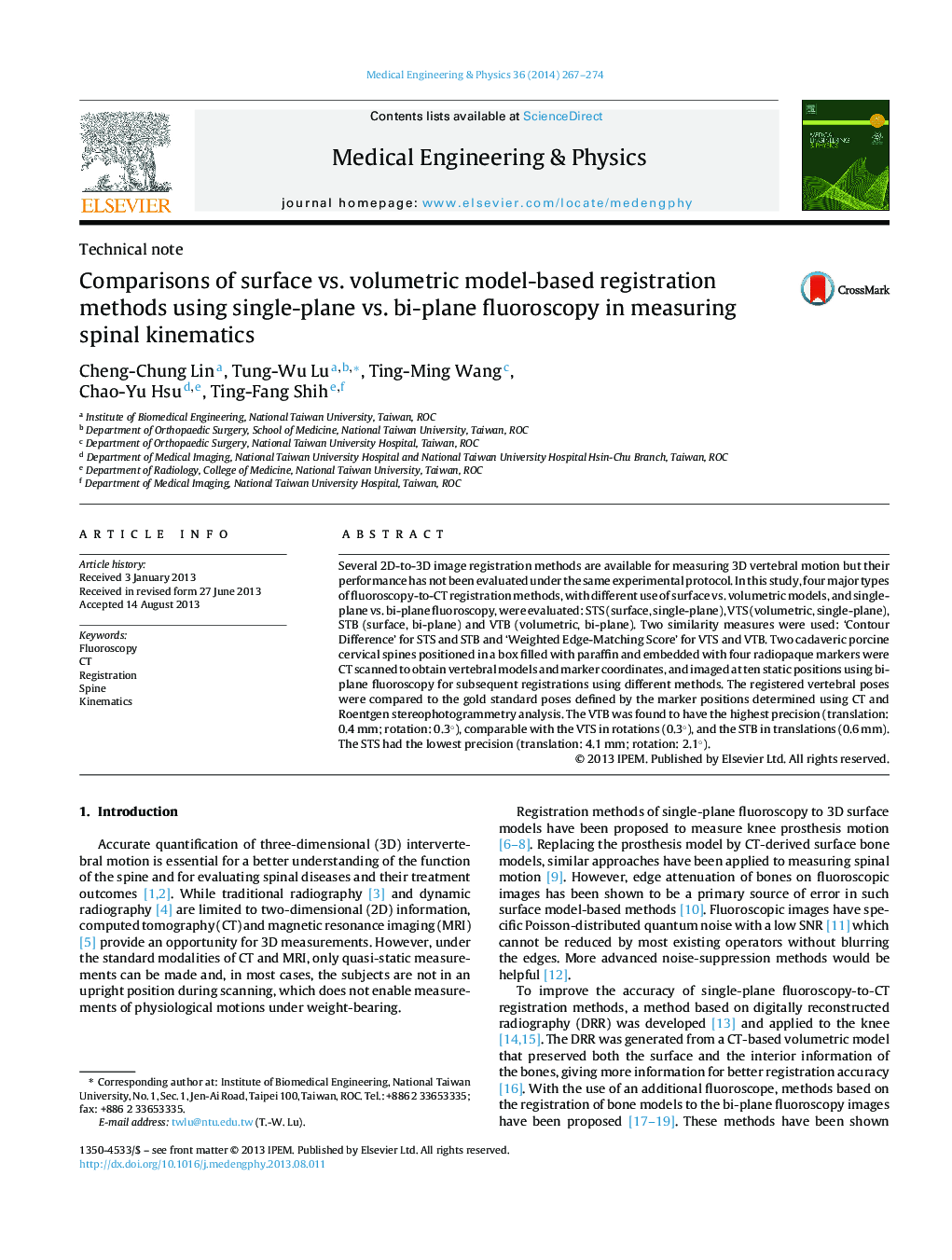| Article ID | Journal | Published Year | Pages | File Type |
|---|---|---|---|---|
| 876009 | Medical Engineering & Physics | 2014 | 8 Pages |
Several 2D-to-3D image registration methods are available for measuring 3D vertebral motion but their performance has not been evaluated under the same experimental protocol. In this study, four major types of fluoroscopy-to-CT registration methods, with different use of surface vs. volumetric models, and single-plane vs. bi-plane fluoroscopy, were evaluated: STS (surface, single-plane), VTS (volumetric, single-plane), STB (surface, bi-plane) and VTB (volumetric, bi-plane). Two similarity measures were used: ‘Contour Difference’ for STS and STB and ‘Weighted Edge-Matching Score’ for VTS and VTB. Two cadaveric porcine cervical spines positioned in a box filled with paraffin and embedded with four radiopaque markers were CT scanned to obtain vertebral models and marker coordinates, and imaged at ten static positions using bi-plane fluoroscopy for subsequent registrations using different methods. The registered vertebral poses were compared to the gold standard poses defined by the marker positions determined using CT and Roentgen stereophotogrammetry analysis. The VTB was found to have the highest precision (translation: 0.4 mm; rotation: 0.3°), comparable with the VTS in rotations (0.3°), and the STB in translations (0.6 mm). The STS had the lowest precision (translation: 4.1 mm; rotation: 2.1°).
